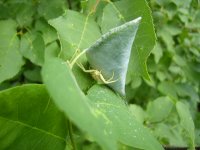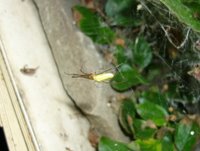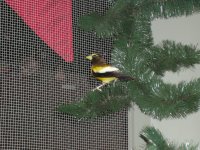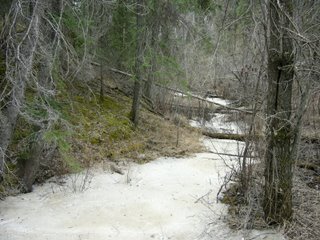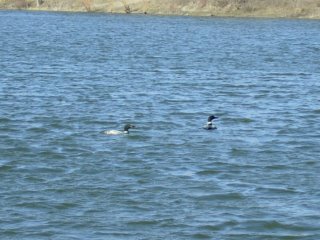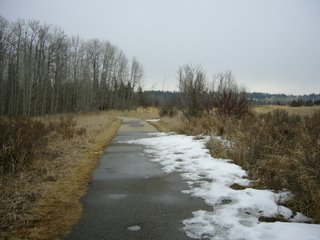 The beavers have recently started taking down a few trees in a normally dry part of the forest. I was sort of surprised that they waited this long to start feeding there, but I'm assuming that the high water has made lots of different trees more accessible to them and we just haven't noticed the busier areas yet.
The beavers have recently started taking down a few trees in a normally dry part of the forest. I was sort of surprised that they waited this long to start feeding there, but I'm assuming that the high water has made lots of different trees more accessible to them and we just haven't noticed the busier areas yet.You can find these chewed trees close to the Nature Centre as you first enter the forest on the Dr. George Trail.
.JPG) One of the nicer things about the flooding has been that it's much easier to watch our muskrats at work on the West Lake from the viewing deck. Usually you'd need binoculars to see whether the brown thing swimming in the water is a muskrat or a beaver, but this year it's not uncommon to see muskrats feeding on cattails right beside the deck.
One of the nicer things about the flooding has been that it's much easier to watch our muskrats at work on the West Lake from the viewing deck. Usually you'd need binoculars to see whether the brown thing swimming in the water is a muskrat or a beaver, but this year it's not uncommon to see muskrats feeding on cattails right beside the deck.I thought I'd end with a quick note about the edible plant walk I mentioned below. The program is definitely a go, so if you're interested in learning the basics of safe grazing give us a call at (403) 346-2010 before July 14th to pre-register. We'll be meeting at Fort Normandeau at 6:30 pm on Saturday the 14th. Hope to see you there!










.JPG)












